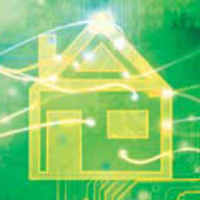A STORM within the reverse mortgage industry has been brewing for almost three years, and while this storm has grown in intensity, it will bring a change not for the worse, but for the better. The storm in this case is not coming from the Atlantic or the Gulf of Mexico, but from HUD in Washington, D.C., and by STORM I mean HUD’s acronym for Servicing Technology on Reverse Mortgages. This storm’s name is HERMIT (Home Equity Reverse Mortgage Information Technology).
In October 2012, the new HERMIT system is set to replace HUD’s Insurance Accounting Collection System, better known as IACS. IACS has served the industry for more than 20 years, and since then, technology and industry requirements have changed. The new HERMIT system will allow HUD and industry participants to step into the 21st century of reverse mortgage servicing.
As one of the leading servicers and subservicers in the reverse space, RMS welcomes the release of the new HERMIT system. While the unveiling of a new system can bring anxiety to any seasoned servicer (I mean, what servicer is ever 100 percent ready to switch to a new system?), the benefits of HERMIT far outweigh the time and effort required to train and prepare for the implementation.
The benefits of HERMIT are many, but a few stand out:
- B2G interface (business to government)
- Servicer request monitoring
- Online document submission
- The ability to record property charges and corporate advances
- The ability to recognize negative Net Principal Limit (NPL)
- Automated claim processing
To really appreciate the benefits, one must truly understand how the changes will enhance a servicer’s ability to update and stay in sync with HERMIT (and therefore with HUD).
First, let’s look at the B2G interface and what it means. The B2G process will allow the syncing of small or large transaction volumes between a servicer and HERMIT. The ability to automatically sync the information will reduce key-punch and balancing errors, which will mitigate the risk involved when a servicer assigns a loan to HUD. This is a vast improvement from today’s process, which requires manually entering all transactions into IACS.
Second, we all know how much time and effort is spent following up on a request via phone or email. Countless hours are wasted by servicers and HUD looking up the status of a request or a claim. With HERMIT, a servicer can access in real time the current status of a request or claim. The ability for real-time updates from a servicer’s desktop spells productivity gains that can be allocated elsewhere.
The ability to record both property charges and corporate advances as separate transactions and the ability to account for negative NPL are also vast improvements. All of these options will improve the servicer’s ability to sync records with HUD’s system, whereas today certain transactions are not recordable in IACS.
As the saying goes, the best has been saved for last: HERMIT streamlines the document submission and request process, eliminating the need for servicers to mail paper copies.
The new claim process will provide the following:
- Auto population of the claim form with the required information and transactions
- Auto validation of calculations online, which will reduce errors in claim submissions
- Automated loan termination in HUD systems, resulting in the cancellation of the monthly MIP draft
- Auto approval of claims and the ability to review a claim’s status
- Increase in servicer’s cash flow, based on the quick claim process
As stated before, there may be no perfect time to implement a new system, but then again, can we afford to wait? This servicer says no.





